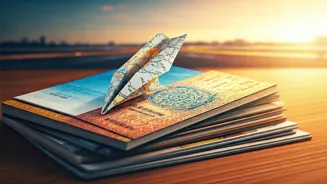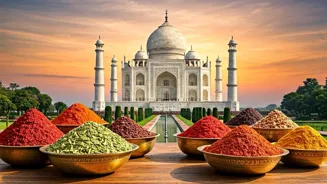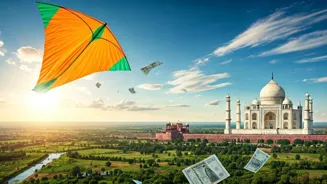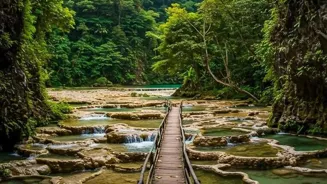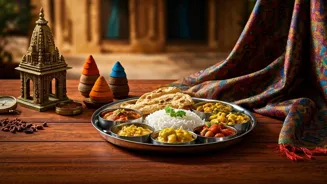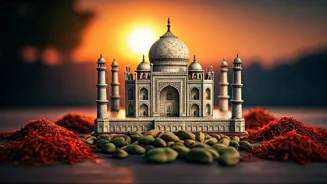Traveling on a Shoestring: How to Make the Most of Your Budget" - Dive into budget travel tips for exploring India affordably
Namaste, wanderlust friends! Are you dreaming of exploring India's historical
forts, chilling in the Himalayas, or maybe experiencing the backwaters of Kerala, but your wallet is giving you the side-eye? Fear not, fellow travelers!
Traveling on a budget doesn't mean you have to compromise on the fun. With a little planning and some smart choices, you can experience the best of India without breaking the bank. Let's get started on how to make your travel dreams a reality, even on a shoestring budget.
Plan wisely for travel in India: research, budget, choose wisely, book trains early
First things first: planning is key. Don't just pack your bags and hop on a train hoping for the best. Start by figuring out where you want to go and what you want to see. Research different destinations in India, keeping in mind that some places are naturally more budget-friendly than others.
For example, Rajasthan might be a bit more expensive than, say, Himachal Pradesh. Once you have a destination in mind, start looking at accommodation options. Hotels can be pricey, so consider hostels, guesthouses, or even homestays.
Homestays are a great way to experience local culture and often come with delicious, home-cooked meals. Now, for the big kahuna of travel expenses: transportation. Flights can eat into your budget quickly, so if you have the time, consider travelling by train.
India's railway network is vast and efficient, and train tickets are much cheaper than flights. Book your train tickets in advance, especially during peak season, to avoid disappointment and higher prices.
Explore budget-friendly accommodation options for travel: hostels, guesthouses, homestays, group sharing
Accommodation is often a big chunk of the travel expenses, so let's explore some budget-friendly options. Hostels are a fantastic choice for solo travelers and those looking to meet new people.
They offer dorm rooms that are significantly cheaper than hotel rooms, and many hostels also have common areas where you can hang out and socialize. Guesthouses are another good option, offering basic but comfortable rooms at reasonable prices.
Check online travel portals for reviews and compare prices before you book. Homestays are becoming increasingly popular in India, and they provide a unique opportunity to experience local culture firsthand.
You'll get to stay with a local family, learn about their customs, and often enjoy home-cooked meals. Look for homestays on websites specializing in this type of accommodation. Consider travelling with a group.
Sharing accommodation with friends or family can significantly reduce your individual costs. Renting an apartment or a villa together can be a more economical option than booking multiple hotel rooms.
Indian street food: budget-friendly, delicious options to explore while traveling
Food is an essential part of any travel experience, and India is a food lover's paradise. However, eating at fancy restaurants every night can quickly deplete your travel fund. Street food is your best friend when you’re on a budget.
India has a phenomenal street food culture, with delicious and affordable options available at every corner. From pani puri to vada pav, you can sample local delicacies without spending a fortune. Dhabas, small roadside eateries, are another great option for budget-friendly meals.
They serve simple but tasty Indian food at very reasonable prices. Don't be afraid to try local messes or canteens. These are often frequented by locals and offer meals at subsidized rates. Pack your own snacks.
Buying snacks from local stores can add up quickly, so pack some essentials like biscuits, nuts, and dried fruits to keep you going between meals. Also keep drinking water with you to avoid buying bottled water constantly.
Prioritize and be creative to save on attractions in India
Saving money on attractions and activities is all about prioritizing and being creative. Many historical sites and monuments in India have affordable entry fees. Some museums and historical sites offer discounts to students or senior citizens, so be sure to carry your ID if applicable.
Explore free attractions, like parks, gardens, and temples. Many cities in India have beautiful public spaces that are free to access. Take advantage of free walking tours offered by local guides. These tours are a great way to learn about the city's history and culture without spending any money.
Negotiate prices. In touristy areas, vendors often inflate prices, so don't be afraid to bargain. A little bit of negotiation can save you a significant amount of money. Look for off-season deals.
Travel during the off-season to take advantage of lower prices on accommodation, flights, and activities.
Use public transport, ride-sharing apps, or rent a bicycle for city exploration
Now, how to move around within the city? Public transportation is your best bet for getting around cheaply. Most cities in India have well-developed public transport networks, including buses, trains, and metros. These are much more affordable than taxis or auto-rickshaws.
Use ride-sharing apps like Ola or Uber. Ride-sharing apps are often cheaper than traditional taxis, and they allow you to track your expenses easily. If you're comfortable with it, consider renting a bicycle.
This is a great way to explore the city at your own pace and get some exercise at the same time. Walking is another great way to experience a city, especially if you're exploring a historical neighborhood. You'll get to see more of the city's hidden gems and soak in the local atmosphere.
If you are taking a cab or auto rickshaw, compare the prices between two or three drivers, you can negotiate well.
Stay connected and manage finances while traveling: get local SIM, use Wi-Fi, track expenses, inform bank, consider insurance
Finally, let's talk about staying connected and managing your finances on the go. Buy a local SIM card upon arrival. This will allow you to access mobile data at a much lower cost than roaming charges. Use free Wi-Fi whenever possible.
Many cafes, restaurants, and hotels offer free Wi-Fi, so take advantage of these opportunities to stay connected. Download offline maps so you can navigate without using mobile data. This is especially useful in areas with poor network coverage. Keep track of your expenses.
Use a budgeting app or a simple spreadsheet to monitor your spending and make sure you're staying within your budget. Inform your bank about your travel plans to avoid any issues with your credit or debit cards. Consider getting travel insurance.
Travel insurance can protect you against unexpected expenses, such as medical emergencies or lost luggage. With careful planning and smart choices, you can travel India without breaking the bank. Happy travels!
AI Generated Content. Glance/InMobi shall have no liability for the content
